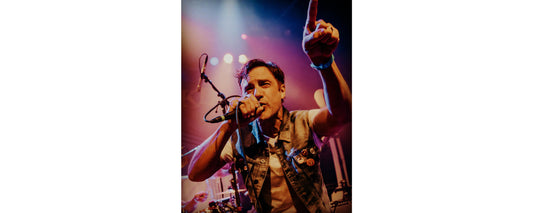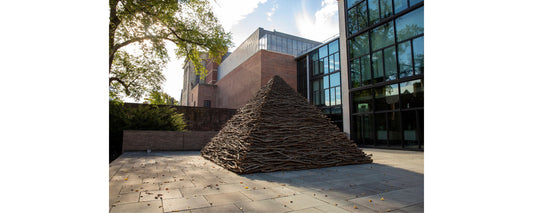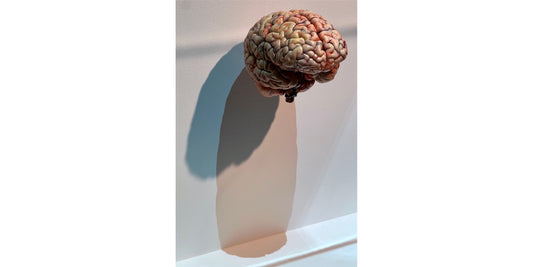It’s only fitting that opening day of the 2013 baseball season falls on April Fool’s Day. Plenty of us have made fools of ourselves rooting for the Yankees or Red Sox, or have been fooled into having sky-high expectations for teams which barely improve from the first game to the hundredth.
New Haven is in a blessed spot between these legendary wooden-batted combatants. Traditionally, it’s been about as far west as you can get where you can proudly reveal yourself as a Red Sox fan without getting in a big fight about it. You may engage in constant philosophical debate about your loyalties, of course, but it won’t come to fisticuffs.
The home of Yale University, with its emphasis on empirical evidence, deep logical justifications, classical traditions and modern progressive bravado, is a great place to ponder one’s place in the major league fan universe.
sponsored by
As one popular narrative goes, on the one (mitted) hand you have a team which has historically relied on wealth and pedigree to maintain its lofty position. On the other, you have (or had, until they started winning pennants a little more often) a scrappy team of diehards, not unlike the 300 of Spartan myth, gaining in romanticism what they lacked in strategic organization.
The Yankees/Red Sox relationship is as defined by myth and literary metaphor as it is by any actual balls hit or bases run. The epic tale of titans clashing has the ring of King Arthur and Camelot to it.
According to some, we are now in the dark ages. A few days ago in the Boston Globe, sports writer Dan Shaughnessy proposed that the “Red Sox-Yankees rivalry as we knew it is over” because, he thinks, neither team is any good. “It’s no longer an issue of which team will finish first and which one will settle for the wild card,” Shaughnessy writes. “The question now is, ‘Who are you going to pick to finish in last place?’”
Shaughnessy, it seems, understates the devotion one can have to a local baseball team. Boston and New York are spoiled; they actually have a legacy of winning games. As for New Haveners, if we thought winning was everything, the Harvard/Yale football games would’ve stopped being exemplified as “The Game” years ago.
Years when neither the Red Sox nor the Yankees are especially strong can be the most interesting ones for those who watch from adjoining states. We’re intrigued, but our local pride is not as sullied by the defeats. Some fans even vacillate. Hard to believe, but some Connecticut baseball fans’ loyalties can change with the breeze of a well-swung bat.
New Haven may be in a supremely comfortable place to objectively survey the Yankees/Sox rivalry. But the city also has had teams of its own, in the ever-fascinating minor leagues. This is modern mythology of a different persuasion, telling of hardy young athletes who worked their way up from farm teams into the big leagues. A New Haven example is the fetchingly named center fielder Coco Crisp, who spent time with the New Haven Ravens about a decade ago before eventually joining the Boston Red Sox for the 2007 and 2008 seasons. (Since 2009, Crisp has been a member of the Oakland Athletics.)
Professional baseball in New Haven dates back to the New Haven Elm Citys in 1875, followed by such contenders as the New Haven Blues in 1887, the New Haven Nutmegs in the early 1890s and the New Haven Edgewoods later that same decade.
Some names of historic New Haven ball teams are rather curious: The New Haven Murlins (“murlin” has no definition in Webster’s, and is not allowed in Scrabble) and the New Haven Weissmen must have been confusing to root for. On the other hand, it’s hard to argue with a designation such as The New Haven Profs; we can only wish they wore mortar boards instead of ball caps. There’s a plethora of feathery monikers: The New Haven Prairie Hens, the New Haven Black Crows, the New Haven White Wings… leading up to the late 20th century and the most fondly remembered professional local team of recent times, the New Haven Ravens. The Ravens were the first minor league team in the city for 60 years or so, and lasted for nearly a decade. They never gained the popularity and city support they deserved, posting the lowest fan attendance figures in the Eastern League for their final three seasons. Their last season, in 2003, was particularly dispiriting since it was already common knowledge that the Ravens would be moving to Manchester, New Hampshire, at the end of it.
The Ravens were succeeded by the New Haven County Cutters, an independent league team not affiliated with either the Major or Minor Leagues. The Cutters moved to Connecticut after paying dues in Lynn and Pittsfield, Massachusetts, where they’d been respectively known as the Mad Dogs and the Berkshire Black Bears. In New Haven, the Cutters began as part of the Northeast League, then played in the “Can-Am League,” a.k.a. the Assocation of Professional Baseball (with “Can” meaning that some of the teams the Cutters took on were over the border in Canada.) The Cutters lasted four seasons at Yale Field, long enough to build a rabid albeit very small group of fans. As low as Ravens attendance records had been, the Cutters drew less than half that number. Even team mascots Tripper (full name: Road Tripper)—who appeared to be the spike-haired offspring of a pig and a jar of yellow mustard—and the dark furry dancing machine (also of indefinite species) Chubbs could do little to help bring in the masses.
We may not always show our affection deeply, and we may not have our own teams to show it to, but New Haven loves its baseball. As Bartlett Giamatti, who served as both President of Yale and Commissioner of Major League Baseball, put it:
“There’s nothing bad that accrues from baseball.”
Opening Day: New York Yankees vs. Boston Red Sox
Monday, April 1, 1:05 p.m.
Yankee Stadium—1 East 161st Street, The Bronx, New York City (map)
Broadcast on ESPN and the YES network, and should be viewable in just about any bar in New Haven.
Written by Christopher Arnott. Photograph shows Yale baseball players practicing at Yale Field.








